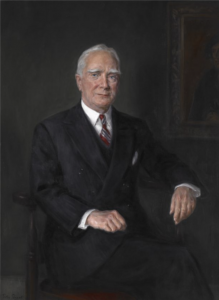
Photo info …
Credit: NewfieldsView Source
(Aug. 17, 1877 – Aug. 25, 1958). George Henry Alexander (Alec) Clowes was born in Ipswich, England, to Josiah Pratt and Ellen (Seppings) Clowes. He was educated at the Ipswich Grammar School, the Royal College of Science (now part of the University of London), and the University of Göttingen in Germany, where he received his doctorate in chemistry in 1899. Clowes conducted postdoctoral work at the Sorbonne, then emigrated to the United States in 1900 to join the new Gratwick Research Laboratory in Buffalo, New York.
Clowes joined the U.S. Army as a research chemist during World War I, studying the physiological effects of mustard gas. He became interested in the effects of the gas on marine life, so he joined the Marine Biological Laboratory at Woods Hole, on Cape Cod, Massachusetts, in 1918.
Clowes married of Buffalo in 1910. Their sons, George H. A. Clowes Jr. and , were born in 1915 and 1918 respectively. A third son died in early childhood. The Clowes family established their home, Easterly, in Woods Hole and maintained it for the remainder of their lives.
Clowes and his family moved to Indianapolis in 1919 to join , where he became director of research in 1920. The year after the discovery of by scientists at the University of Toronto in 1921, Clowes organized a collaboration between Toronto and Eli Lilly that resulted in successful purification, standardization, and mass production of the lifesaving drug. Before his retirement from Lilly in 1946, Clowes contributed substantially to the development of products such as liver extract (anemia), protamine insulin, and penicillin.
Both Alec and Edith contributed to the artistic and financial development of Trinity Episcopal Church. Alec served on the board beginning in 1933 and as board chair from 1941 to 1949. Alec, Edith, and their sons established the in 1952. After Clowes’ death in 1958, the foundation underwrote much of the cost of at as a home for the symphony.
Clowes was a lifelong collector of fine art. He joined the board of the in 1934. After his death, the family’s collection of European Old Masters became the property of the Clowes Fund, which has been displayed at the (IMA) since 1971. IMA erected its Clowes Pavilion for this purpose. The foundation has gradually transferred ownership of the collection to the museum. This transfer was completed in 2020.

Help improve this entry
Contribute information, offer corrections, suggest images.
You can also recommend new entries related to this topic.

